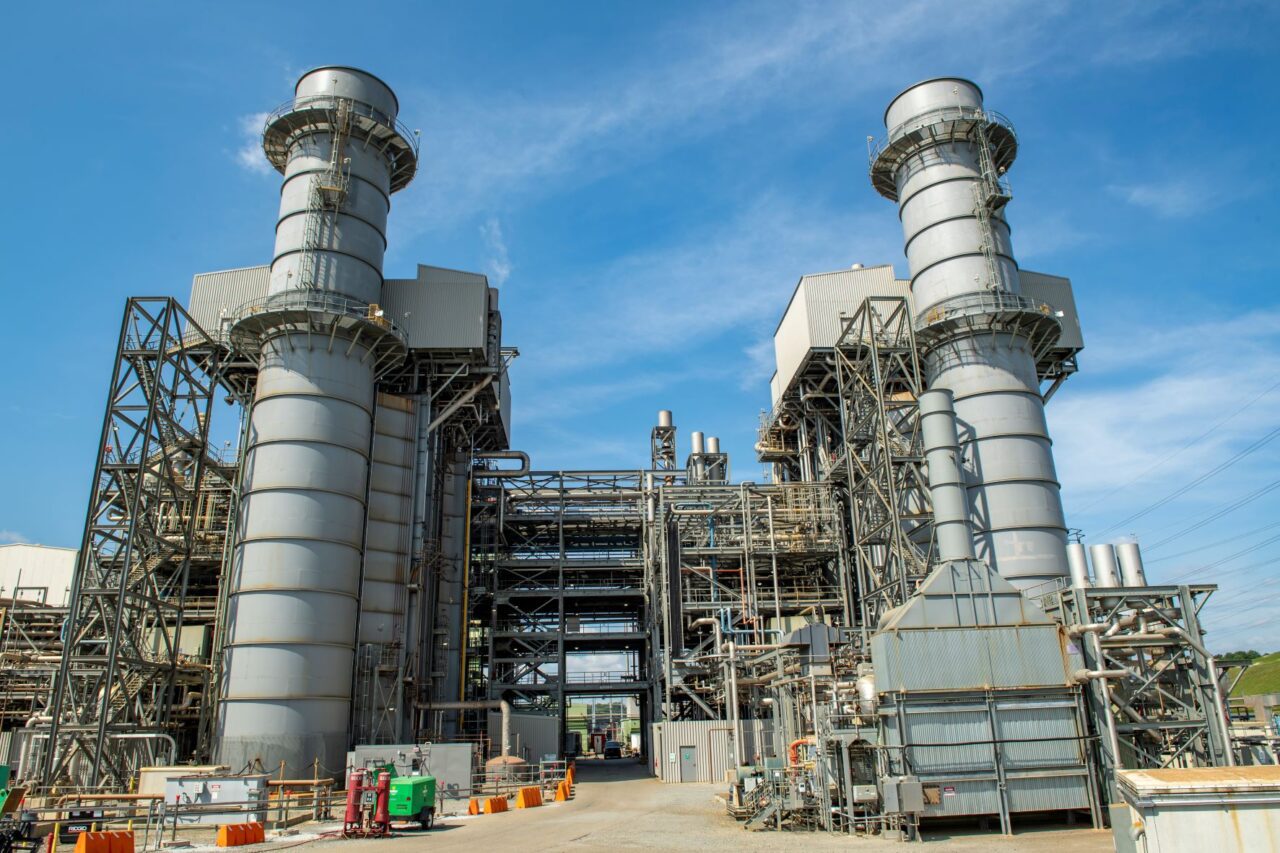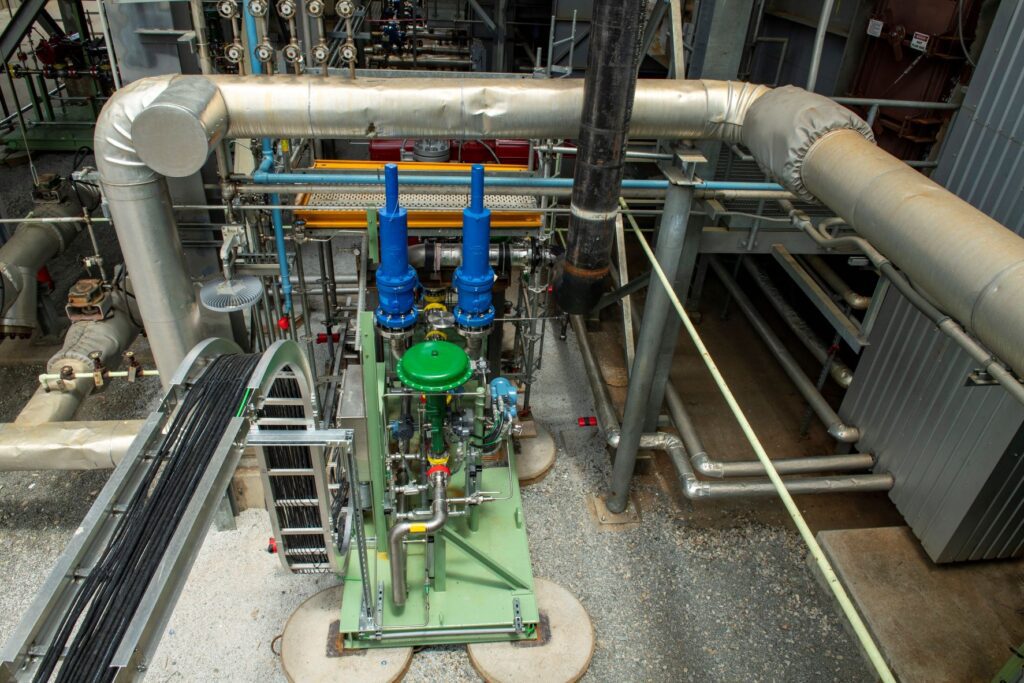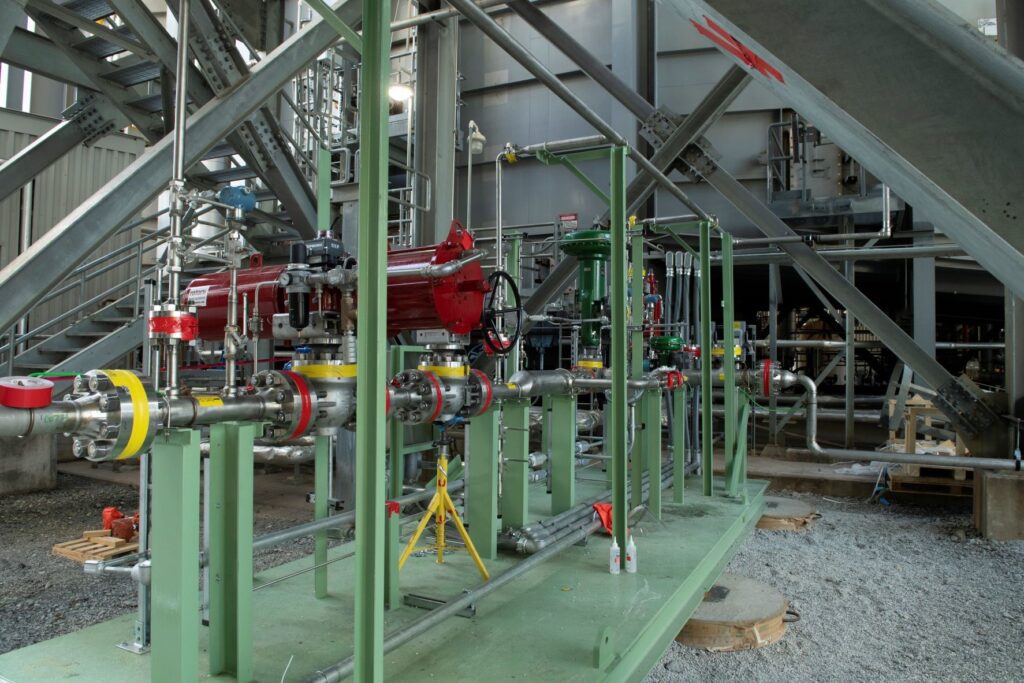
A demonstration project at Georgia Power’s 2.5-GW natural gas–fired Plant McDonough-Atkinson facility has validated a natural gas fuel blend with 20% hydrogen by volume on one of its six Mitsubishi Power advanced-class gas turbines.
The test, one of the largest of its kind to date, provided an approximately 7% reduction in carbon emissions compared to gas, project participants Mitsubishi Power, Southern Co.’s Georgia Power, and the Electric Power Research Institute (EPRI) said on June 10.
The test successfully validated fuel blending hydrogen and natural gas “at both partial and full load” at the designed 100% natural gas firing temperature, “within emissions compliance and without impact to maintenance intervals,” project participants said. The team also confirmed “improved turndown by testing up to 20% hydrogen at minimum emissions-compliant load.”
The project entailed building flow control and pressure control skids to feed the fuel blend to one of the Smyrna, Georgia, plant’s six M501G natural gas turbines, which have an approximate output of 265 MW.


An Industry First for an Advanced-Class Gas Turbine
Mitsubishi Power’s milestone follows GE Power’s successful test in April to combust an initial blending of 5% hydrogen and 95% natural gas fuel in a 7HA.02 gas turbine at the 485-MW Long Ridge Energy Terminal combined cycle power plant. The 7HA.02 combustion turbine—a model GE debuted in 2017—is already “innately capable” of burning 15% to 20% hydrogen by volume given its GE DLN 2.6+ combustion system. The next phase of the Long Ridge project will involve blending of 20% hydrogen.
The M501G model, which Mitsubishi Power launched in 1997, is a 1,500C–class gas turbine that features a pre-mix dry-low NOx (DLN) combustion system. It mixes the fuel and air prior to being put into the combustor, resulting in lower nitrogen oxide (NOx) emissions than diffusion technologies. Mitsubishi Power estimates the turbine model can combust fuel of up to 30% hydrogen by volume. However, the Georgia project “utilizes some results” from a project commissioned by Japan’s national research and development agency New Energy and Industrial Technology Development Organization (NEDO), the company noted.
As part of national efforts to establish a concerted role for hydrogen and ammonia in power generation, NEDO has backed Mitsubishi Power’s research and development (R&D) efforts relating to pre-mix and multi-cluster DLN technology. Multi-cluster DLN technology, which could be ready for rig test completion by March 2025, promises to enable a more efficient mixing of hydrogen and air via an upgraded fuel delivery nozzle design, and potentially boost Mitsubishi Power’s combustion capability of its large-frame gas turbines to 100% hydrogen by volume. The Georgia project also “builds upon Mitsubishi Power’s hydrogen combustion experience and ongoing hydrogen combustion development for 100% hydrogen DLN combustion at the company’s facility at Takasago Works in Hyogo Prefecture, Japan,” the company said.

Southern Co. Exploring Hydrogen to Achieve Net-Zero Goals
Mitsubishi Power provided full turnkey service for the project including engineering, planning, hydrogen blending hardware, controls, commissioning, and risk management. Compressed gas solutions provider Certarus partnered with Mitsubishi Power to source and manage the hydrogen supply.
Southern Co.’s R&D organization, a 50-year-old initiative that has led innovation at the utility, served as technical consultant on the project. The initiative is notably spearheading HyBlend with several Department of Energy national laboratories. The two-year project aims to address technical barriers to blending hydrogen in natural gas infrastructure and study lifecycle emissions of hydrogen blends.
Southern Co., which has an enterprise-wide goal of net-zero carbon emissions by 2050, has also joined the Hydrogen Council, a global, CEO-led coalition of companies with a “vision and long-term ambition for hydrogen to foster a clean energy transition.” The company says that while natural gas will be “a critical partner” in the growth of renewables, it is exploring the “numerous opportunities” to leverage its existing infrastructure to support clean energy, such as hydrogen.”
“This monumental hydrogen demonstration project at Plant McDonough-Atkinson is another example of how, at Georgia Power and Southern Company, we are building the future of energy, today,” said Allen Reaves, senior vice president and senior production officer at Georgia Power. “This demonstration helps pave the way for long-term clean and carbon-free use for already existing infrastructure. Making these smart investments today on behalf of our customers ensures we can continue to provide clean, safe, reliable, and affordable energy as Georgia grows and thrives for decades to come,” he said.
Researchers from EPRI, meanwhile, supported the development of the project and were on-site during the testing. The non-profit energy R&D organization said it will publish a detailed report on the testing and results later this summer. “This successful hydrogen demonstration test reinforces the significant, game-changing role that this and other low-carbon technologies can play to help reach economy-wide decarbonization,” said Neva Espinoza, EPRI vice president of Energy Supply and Low-Carbon Resources.
—Sonal Patel is a POWER senior associate editor (@sonalcpatel, @POWERmagazine).
The post Southern Co. Gas-Fired Demonstration Validates 20% Hydrogen Fuel Blend appeared first on POWER Magazine.